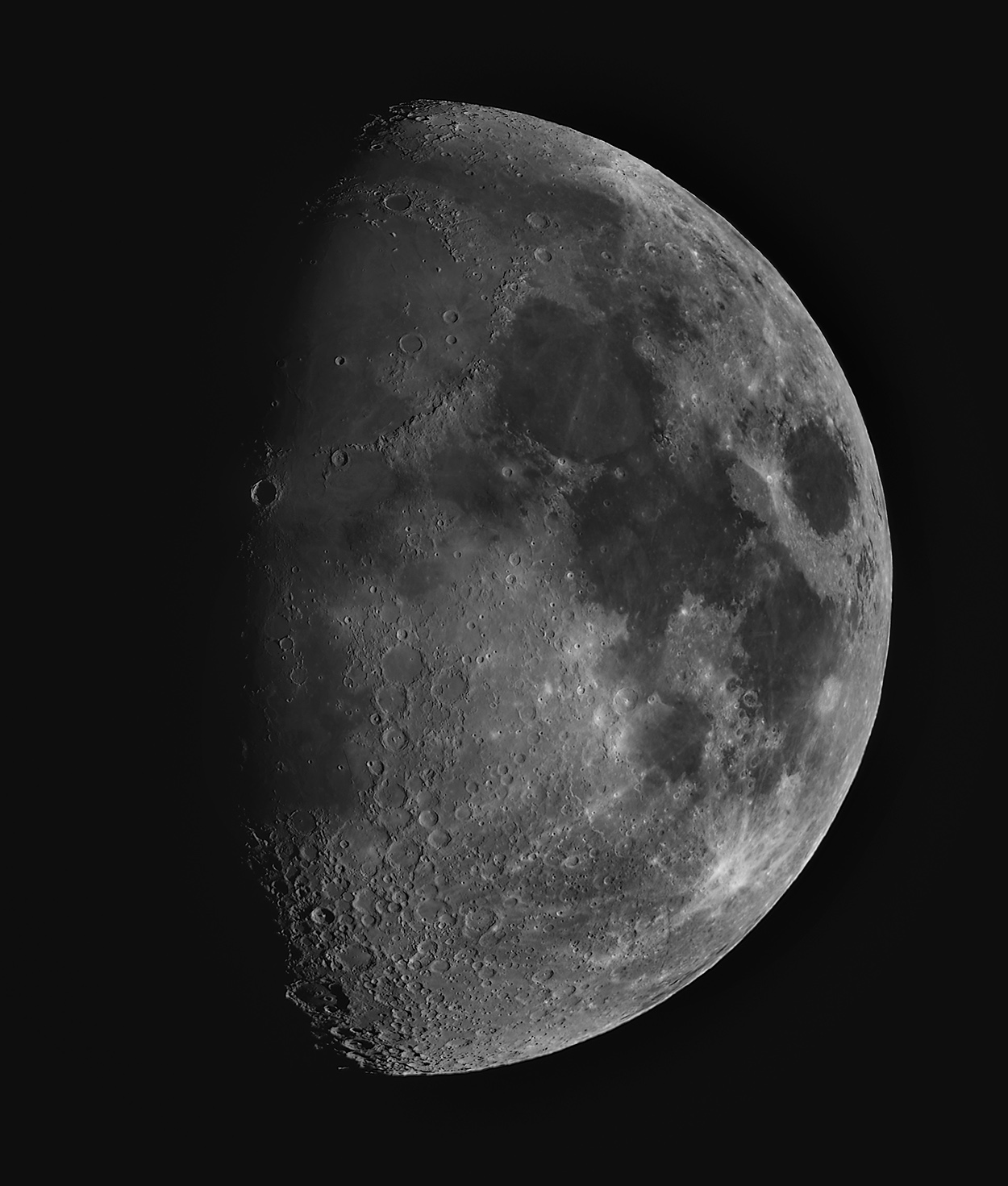
| HOME |
CRESCENT MOON - 9 DAYS PHASE
EARTH SATELLITE IN VIRGO
(Image centered at: ra 12 h:49 m / dec - 04º 44')
CLICK THE IMAGE FOR A HIGH RESOLUTION VIEW
June - 2024, Home Backyard in Martinez, Buenos Aires, Argentina
DATA
TYPE: Earth Satelte
APPARENT DIAMETER: 30 arc minutes
APPARENT MAGNITUDE (V): -10.8
PHASE: 65,5%
DISTANCE: 403.006 kms
IMAGE INFORMATION
INSTRUMENT: 6" ORION OPTICS UK (Ultra Grade Optics) w/Sky Watcher Coma Corrector (0.9x) working at at f4.5
CAMERA: QHY 183 MONO
MOUNT: VIXEN GDPX, OAG with Starlight Xpress Lodestar
FILTERS: Astronomik Ha filter 6nm
SKY CONDITIONS: urban skies - Bortle 8
EXPOSURES: Ha 10 x 0,02 secs
OBJECT DESCRIPTION AND IMAGE SESSION
The Moon is Earth's only natural satellite. It orbits at an average distance of 384,400 km, about 30 times the diameter of Earth. Over time Earth's gravity has caused tidal locking, causing the same side of the Moon to always face Earth. Because of this, the lunar day and the lunar month are the same length, at 29.5 Earth days. The Moon's gravitational pull – and to a lesser extent, the Sun's – are the main drivers of Earth's tides.
In geophysical terms the Moon is a planetary-mass object or satellite planet. Its mass is 1.2% that of the Earth, and its diameter is 3,474 km (2,159 mi), roughly one-quarter of Earth's. Within the Solar System, it is the largest and most massive satellite in relation to its parent planet, the fifth largest and most massive moon overall, and larger and more massive than all known dwarf planets.
Its surface gravity is about one sixth of Earth's, about half of that of Mars, and the second highest among all Solar System moons, after Jupiter's moon Io. The body of the Moon is differentiated and terrestrial, with no significant hydrosphere, atmosphere, or magnetic field.
It was formed 4.51 billion years ago, not long after Earth's formation, out of the debris from a giant impact between Earth and a hypothesized Mars-sized body called Theia. The lunar surface is covered in lunar dust and marked by mountains, impact craters, their ejecta, ray-like streaks and, mostly on the near side of the Moon, by dark maria ("seas"), which are plains of cooled magma. These maria were formed when molten lava flowed into ancient impact basins.
CRESCENT MOON - 9 DAYS PHASE
100% RESOLUTION
ANNOTATED IMAGE WITH CRATERS, MARE, MOUNTS AND APOLLO MISSION LANDINGS